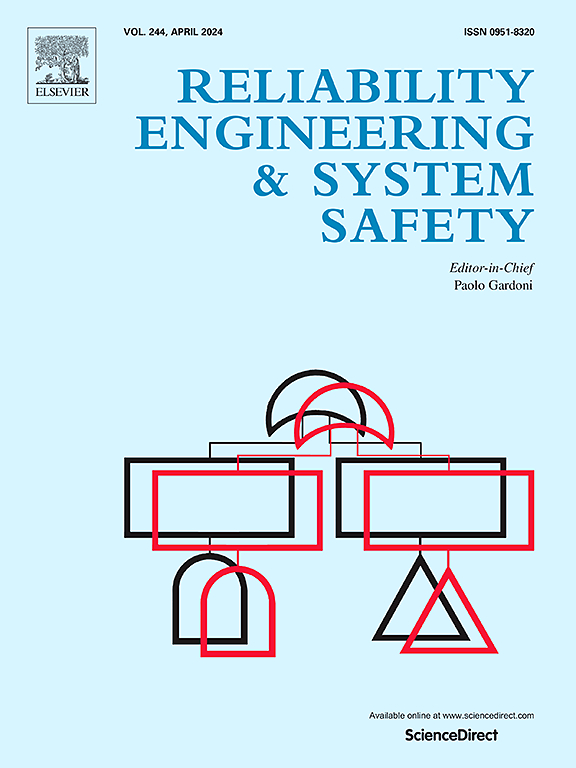Reliability improvement of rolling stock planning with maintenance requirements for high-speed railway
IF 9.4
1区 工程技术
Q1 ENGINEERING, INDUSTRIAL
引用次数: 0
Abstract
The rolling stock planning problem is a key step in the high-speed railway transit planning process. When trip delays, railway departments may need to incur considerable additional costs for plan adjustments to quickly resume operations. Therefore, we consider the impact of trip delay probabilities during rolling stock planning, aiming to minimise the total travel cost and maximise plan robustness to enhance the reliability of plan execution. A space–time–state network is established to describe the operation of rolling stocks considering accumulated mileage and running time constraints for maintenance, representing the rolling stock planning problem as a mixed-integer nonlinear programming model. Then, an alternating direction method of multipliers (ADMM)-based decomposition mechanism that decomposes the model into a set of rolling stock route selection subproblems is introduced, where each subproblem is efficiently solved by a maintenance-constrained shortest path algorithm related to reliability. A set of different scale real-life cases based on trips managed by a depot in China are used to verify the effectiveness of the proposed model and algorithm. The results show that the ADMM considerably outperforms the traditional Lagrangian relaxation (LR) method. On a set of larger-scale cases, the proposed ADMM with enhancements obtains an optimality gap of 2.42 % on average. This result is substantially better than LR, which provides optimality gaps of 32.55 % on average. Finally, the model in this paper effectively enhances the probability of successful rolling stock route execution in trip delay scenarios, resulting in a rolling stock plan with improved reliability.
求助全文
约1分钟内获得全文
求助全文
来源期刊

Reliability Engineering & System Safety
管理科学-工程:工业
CiteScore
15.20
自引率
39.50%
发文量
621
审稿时长
67 days
期刊介绍:
Elsevier publishes Reliability Engineering & System Safety in association with the European Safety and Reliability Association and the Safety Engineering and Risk Analysis Division. The international journal is devoted to developing and applying methods to enhance the safety and reliability of complex technological systems, like nuclear power plants, chemical plants, hazardous waste facilities, space systems, offshore and maritime systems, transportation systems, constructed infrastructure, and manufacturing plants. The journal normally publishes only articles that involve the analysis of substantive problems related to the reliability of complex systems or present techniques and/or theoretical results that have a discernable relationship to the solution of such problems. An important aim is to balance academic material and practical applications.
 求助内容:
求助内容: 应助结果提醒方式:
应助结果提醒方式:


